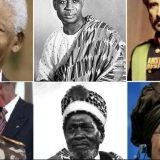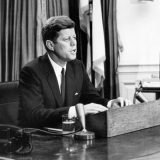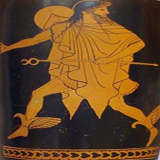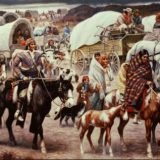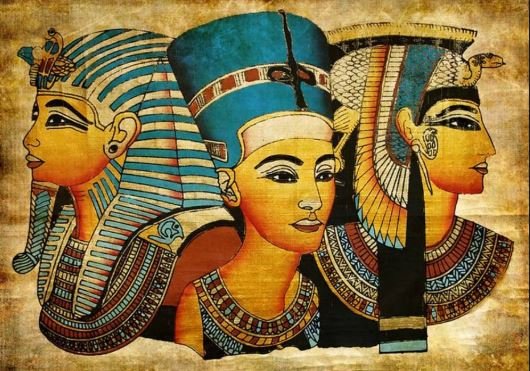10 Transformative Figures in Baroque Music
The Baroque period (1600–1750) was a time of immense artistic and musical innovation. This era, characterized by ornate compositions, expressive harmonies, and the emergence of instrumental music as an independent art form, produced some of the most influential composers in Western music history. Each of these figures not only defined the Baroque aesthetic but also contributed significantly to the evolution of music as a whole. Below, World History Edu explores ten of the most transformative figures of the Baroque era, their contributions, and their masterpieces.
Johann Sebastian Bach (1685–1750)

Bach portrait, 1748
Johann Sebastian Bach is arguably the most significant composer of the Baroque era. His music synthesized the various national styles of the period, including Italian virtuosity, French dance rhythms, and German counterpoint. Bach’s work demonstrated an unparalleled mastery of counterpoint, harmonic progression, and expressive depth.
JS Bach’s “Brandenburg Concertos” (BWV 1046–1051) showcase the diversity and brilliance of Baroque orchestration, featuring inventive instrumental dialogues. His “Mass in B Minor” (BWV 232) represents a peak in sacred choral music, combining grandeur with profound expressivity. Another notable work, “The Well-Tempered Clavier” (BWV 846–893), revolutionized keyboard music, providing a model for future composers.
Claudio Monteverdi (1567–1643)

Claudio Monteverdi’s portrait by Italian artist Bernardo Strozzi.
Monteverdi was a transitional figure between the Renaissance and Baroque periods, pioneering early opera and developing new forms of expressive musical storytelling.
His opera “L’Orfeo” (1607) is one of the first true operas, merging dramatic text with innovative orchestration and expressive recitative. Monteverdi’s “Vespers of 1610” combines Renaissance polyphony with Baroque ornamentation, showcasing his innovative harmonic language. His later operas, such as “The Coronation of Poppea,” explore human emotion and political intrigue with unprecedented depth.
George Frideric Handel (1685–1759)

Portrait of George Frideric Handel
George Frideric Handel, a German-born composer who became a naturalized British citizen, was a master of opera, oratorio, and orchestral works. His ability to blend dramatic expression with melodic beauty set him apart as one of the greatest composers of his time.
Handel’s “Messiah” (HWV 56) is his most famous work, particularly the “Hallelujah” chorus, which remains one of the most recognizable pieces of classical music. His “Water Music” (HWV 348–350) and “Music for the Royal Fireworks” (HWV 351) display his command over orchestral writing and celebratory grandeur. In opera, “Giulio Cesare” (HWV 17) exemplifies his gift for drama and character development.
Antonio Vivaldi (1678–1741)

A probable portrait of Vivaldi, circa 1723.
Vivaldi, an Italian composer and virtuoso violinist, greatly influenced the concerto form. His music is characterized by energetic rhythms, vivid imagery, and brilliant instrumental color.
His most famous work, “The Four Seasons” (Op. 8, RV 269, 315, 293, 297), is a set of violin concertos that vividly depict seasonal landscapes and events. Vivaldi’s concertos expanded the technical possibilities of the violin and shaped the concerto as a genre. His “Gloria” (RV 589) is a powerful choral composition that remains a staple of sacred music.
Jean-Philippe Rameau (1683–1764)

Jean-Philippe Rameau, as portrayed by French artist Jacques Aved.
Rameau was a French composer and music theorist whose works helped define the French Baroque style. He also made significant contributions to music theory, particularly in harmony.
His opera “Hippolyte et Aricie” (1733) challenged conventions and introduced a more dramatic and harmonically adventurous approach to French opera. His “Pièces de Clavecin” for harpsichord showcased intricate ornamentation and expressive nuance. Rameau’s “Les Indes Galantes” (1735) blended French dance forms with exotic themes, making it a landmark of Baroque opera-ballet.
Henry Purcell (1659–1695)

Henry Purcell’s portrait, created by John Closterman.
Purcell was England’s greatest Baroque composer, known for his expressive vocal writing and integration of English, French, and Italian styles.
His opera “Dido and Aeneas” (1689) is a masterpiece of early English opera, particularly the poignant aria “When I am laid in earth.” His “Music for the Funeral of Queen Mary” is a profoundly moving ceremonial work. His “Abdelazer Suite” contains the famous Rondeau later adapted by Benjamin Britten.
Georg Philipp Telemann (1681–1767)

Georg Philipp Telemann. Artwork by German artist Valentin Daniel Preisler.
Telemann was one of the most prolific composers of the Baroque era, producing over 2,900 compositions. He was known for his ability to blend various European styles into a distinctive and accessible musical language.
His “Tafelmusik” (1733) is a collection of instrumental suites, concertos, and chamber music written for aristocratic banquets. The “Viola Concerto in G major” is one of the first known concertos for the viola, demonstrating Telemann’s skill in melodic invention and orchestration. His “Paris Quartets” (1730s) exemplify his mastery of chamber music.
Alessandro Scarlatti (1660–1725)

Alessandro Scarlatti
Scarlatti was a key figure in developing opera seria and the Italian Baroque cantata, influencing both vocal and instrumental forms.
His opera “Griselda” (1721) highlights his mastery of dramatic tension and bel canto style. His “Toccata per Cembalo” for harpsichord is an early example of virtuosic keyboard writing. Scarlatti’s more than 600 cantatas showcase his skill in vocal expression and ornamentation.
Dieterich Buxtehude (1637–1707)

Portrait of Dieterich Buxtehude. Created by Dutch painter Johannes Voorhout.
Buxtehude was a Danish-German organist and composer, best known for his influence on J.S. Bach and his contributions to sacred and organ music.
His “Membra Jesu Nostri” (BuxWV 75) is a cycle of seven cantatas reflecting on Christ’s suffering, showcasing deep emotional expressivity. His organ preludes and fugues set a precedent for later German organ music, influencing Bach’s monumental organ works.
Arcangelo Corelli (1653–1713)

A portrait of Arcangelo Corelli by Hugh Howard, an Irish artist.
Corelli was a pioneer of the concerto grosso form and an influential violinist whose works shaped Baroque instrumental music.
His “Concerto Grosso Op. 6” established the form that later composers, including Handel, expanded upon. His “Sonata da Chiesa” and “Sonata da Camera” are crucial to the development of the sonata form. Corelli’s influence on violin technique and ensemble writing was immense, laying the groundwork for later instrumental developments.






